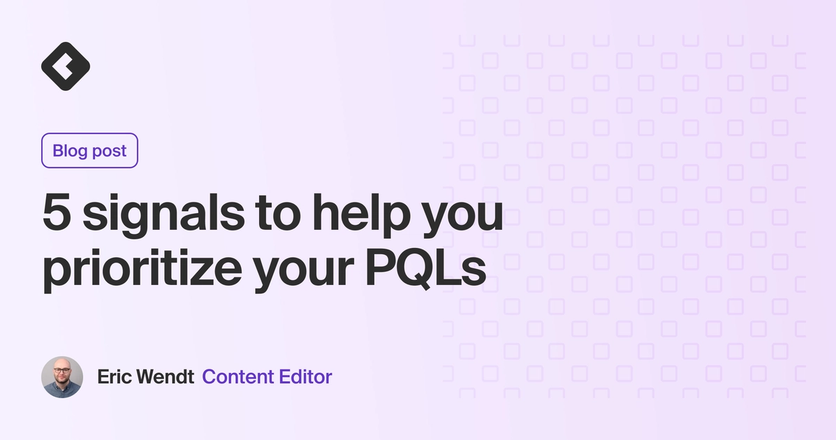5 min read
Community-Driven Product Development - Building A Tight Community Feedback Loop
We're collaborating on a six part educational series with Mark Tan, Director of Product and Community at Wyze. We'll discuss trends and takeaways when it comes to building products in tandem with your community. Mark will cover everything he's learned about community-driven product development, so you as a product manager (or other team leader!) can get as close to your end users as possible.
This week, Mark discussed how to create a community feedback loop that's a two-way dialogue with members. We've also excerpted questions from our follow-up Slack Q&A. You can find new videos posted to our Community-Driven Product Development YouTube playlist every Tuesday afternoon, and you can join our following live Slack Q&As for the next 3 Thursdays. See you there!
In the video, you walked us through ways to integrate community into ideation, testing, and launch. Are there any examples from your experience of when that feedback in any stage led directly to blocking a planned feature or creating a new one?
Yes! When I was working on video games retail websites, I was responsible for building an online trade-in experience for our e-commerce site. We showed the design to a group of video gamers, and they hated it. They didn't like the flow, messaging, and found it to be confusing. We didn't catch this during the research phase because when we talked to individuals, they were pointing out different areas to fix. The gamers collectively pointed out the issues together and gave us ideas on how to improve it. We delayed the launch by three months and later on released it after doing more public testing.
You also gave us a number of examples in the video of how to collect feedback from community members. Also curious if there were any ways you tried in the past that just didn’t work. Anything you’d suggest people avoid?
Interesting question. Asking people to go on a separate section of your website and having them go through multiple steps lead to drop off. Allowing them to give feedback while they are in the moment and experiencing the pain point leads to better results.
When we launched a new feature to improve cloud storage and AI detection, we didn't have an easy way to collect feedback and requested people to submit a ticket. That slowed us down. So we built a way to submit feedback after first use and was able to collect 10x more responses, allowing us to fix issues faster.
Speaking of the feedback members provide, one really valuable point you have brought up throughout the series is the importance of a two-way dialogue and providing information back to members to let them know how it’s being used. You also mention the importance of providing product updates to members. What channels and formats do you use to do both of those things?
The most common ones:
- Newsletter updates
- Our own site forum
- Pinned post on social channels
The level of information varies depending on the target audience. In general, more frequent and casual updates work well within our community.
Your community has an Ambassador Program, a Beta Program, and an Early Access Program. Is there any member overlap across those? Curious if members, and/or your team benefit from having cross over, or if you keep it largely separate.
Yes! The core volunteers are usually part of our beta program, then many of the beta program members support our early access programs too. However, it’s not a complete subset. For example, some volunteers are excited about helping us moderate our forums, but not everyone wants to test prototypes. We offer them a chance to participate and let them decide if they want to join.
I think there are benefits in creating a program that’s separate from these as well. For example, local chapter volunteers. Hopefully we can scale and get more resources to build this in the future. 🙂
One of the things we wholeheartedly agree with you on is the importance of treating members as humans. At times, it can be easy to be so focused on the business or project that you don’t intentionally make space for that. Any tips for ensuring you, and your team, keep that top of mind and intentionally build it into your feedback loop?
NPS and sentiment analysis are usually good ways to do a pulse check of how the community feels. We send out surveys and ask our users how they feel overall, not just about the products but also about our community vibe as a whole.
Then every quarter, we have a zoom call with several of our volunteers and moderators. Our leadership team joins those calls, and we give our members a chance to share their feedback.
In our case, it’s usually a tension between quality (sentiment) vs. quantity (rapid growth). Because finding the balance is important for long-term retention. These pulse checks are excellent ways to balance the business results with how the community feels.
We think you'd like these

Community-Driven Product Development - Community Engagement During Testing and Development
Oct 12th, 2021·4min readCommunity
Uncommon Book Club 📚 David Spinks and The Business of Belonging
Nov 19th, 2021·13min readCommunity
Uncommon Q&A: Tweeting with David Spinks
Nov 17th, 2021·6min readCommunity
5 signals to help you prioritize your PQLs
Apr 22nd, 2024·5min read